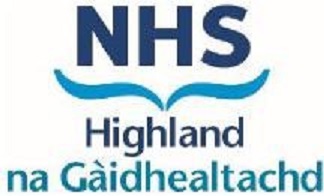Neutropenic sepsis: Initial empiric therapy for all patients (Antimicrobial)

NEUTROPENIC SEPSIS SUSPECTED - Requires URGENT SENIOR medical assessment.
See Department of Cancer Services Systemic Anti-Cancer Therapy (SACT): Guidelines for the Treatment of Neutropenic Sepsis in Adult Patients for more background and management information (NHS Highland intranet access required).
Definition of Neutropenic Sepsis: Neutrophil count <0.5 x 109/L with other features of possible sepsis ie SIRS or high index of clinical suspicion. Patients on chemotherapy or with neutropenia with or without fever are at risk of serious complications. These patients are at risk of serious, potentially fatal infections.
|
First Line Investigations
|
Other Investigations
|
First Hour Management – INITIATE HIGHLAND SEPSIS RECORD Initial Bundle
If positive culture results are available, commence antibiotic regimen to cover known pathogens.
Assess risk. High risk patients are those with septic shock or NEWS of 7 or above plus all patients with acute leukaemia or allogeneic transplant.
For Haematology/Oncology patients:
- As soon as treatment is initiated, contact patient’s Consultant at Raigmore Hospital if during working hours.
- If admitted out-of-hours, and the patient is clinically stable, this can be done the following morning.
- On-call Consultant Haematologist or Oncologist can be contacted through Raigmore switchboard if necessary.
- Contact should be clearly documented in the medical notes.
Avoid fluoroquinolone if patient has received prophylaxis with ciprofloxacin.
Duration: depends on diagnosis. Seek advice from Haematology or Oncology Consultant.
For glossary of terms see Glossary.
Drug details
Initial Therapy (Day 0)
IV piperacillin/tazobactam 4·5g every 6 hours
In critical care areas, administer each dose over 3 hours.
In penicillin allergy
IV aztreonam 2g every 6 hours PLUS IV vancomycin - refer to NHS Highland vancomycin dosing guidelines.
If patient has received or is receiving cisplatin, discuss with Oncology/Haematology/ Microbiology Consultant for alternative to gentamicin or vancomycin (risk of nephrotoxicity).
If high risk
ADD IV gentamicin - refer to NHS Highland gentamicin dosing guidelines.
High risk are patients with septic shock or NEWS of 7 or above plus all patients with acute leukaemia or allogeneic transplant.
Maximum gentamicin duration without review is 72 hours.
If patient has received or is receiving cisplatin, discuss with Oncology/Haematology/ Microbiology Consultant for alternative to gentamicin or vancomycin (risk of nephrotoxicity). Please note treatment with gentamicin should be limited to minimise toxicity.
If MRSA is known or suspected, suspected central line infection or signs of skin/soft tissue infection
ADD IV teicoplanin or vancomycin - refer to NHS Highland vancomycin or teicoplanin dosing guidelines.
If patient has received or is receiving cisplatin, discuss with Oncology/Haematology/ Microbiology Consultant for alternative to gentamicin or vancomycin (risk of nephrotoxicity).
If CAP suspected and atypical cover required
ADD IV clarithromycin 500mg every 12 hours.
Check for drug interactions with clarithromycin
If previous ESBL infection or known carrier
Use IV meropenem 1g every 8 hours in place of piperacillin/tazobactam.
Check previous microbiology results for resistance information
